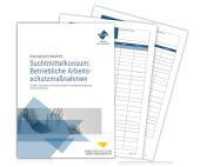- ホーム
- > 洋書
- > ドイツ書
- > Humanities, Arts & Music
- > Linguistics
- > english linguistics
Full Description
Art inspires art. The visual and the verbal as two forms of expression often influence each other's evolution begetting painted stories or canvases of words. In visual narratives, the images or visual elements like paintings, pictures are key to the storytelling and it finds such a correlation in literature that they become integral to the narrative complementing or enhancing the text. Accordingly, this book aims to explore the intersection between visual arts and literature, a field often characterized by its capacity to generate unique and immersive experiences; delving into contemporary Turkish novels like Murat Gülsoy's Painter Vasıf's History of Secret Loves and Gündüz Vassaf's Painter's Rebellion. With this book, as far as Turkish art and literature scene is concerned, I hope to present a confluence of brush and pen uncovering how art shapes writing skills and visual journeys are important and effective tools of storytelling within a historical, cultural and artistic context. This book has a great potential to contribute not only to literary studies but also to the broader discourse on the creative process, and the cognitive aspects of creative writing by recognizing and appreciating the role of visual thinking.
Contents
FOREWORD
NOTES FOR THE READER
INTRODUCTION
PART I -Art and Literature in Turkey
1.1- Historical Roots of Art
1.2- The Art of Painting- Ottoman Miniature Art
1.3- Poet-Painters in Turkish Literature
1.4- Orhan Pamuk's My Name is Red and The Naive and Sentimental Novelist
PART II- Painter Vasıf's History of Secret Loves by Murat Gülsoy
2.1- Creative Writing
2.2- Who is Painter Vasıf?
2.3- Group D Painters in Turkey
2.4- Art, Politics and Women
PART III- Painter's Rebellion by Gündüz Vassaf
3.1- Burial of St. Lucy
3.2- Death, Decapitation and Violence
3.3- Why Caravaggio?
3.4- Tracing Caravaggio in Paris, London, Florence and Rome
3.5- Who killed Caravaggio?
CONCLUDING REMARKS
WORKS CITED
ONE FINAL NOTE FOR THE READER








